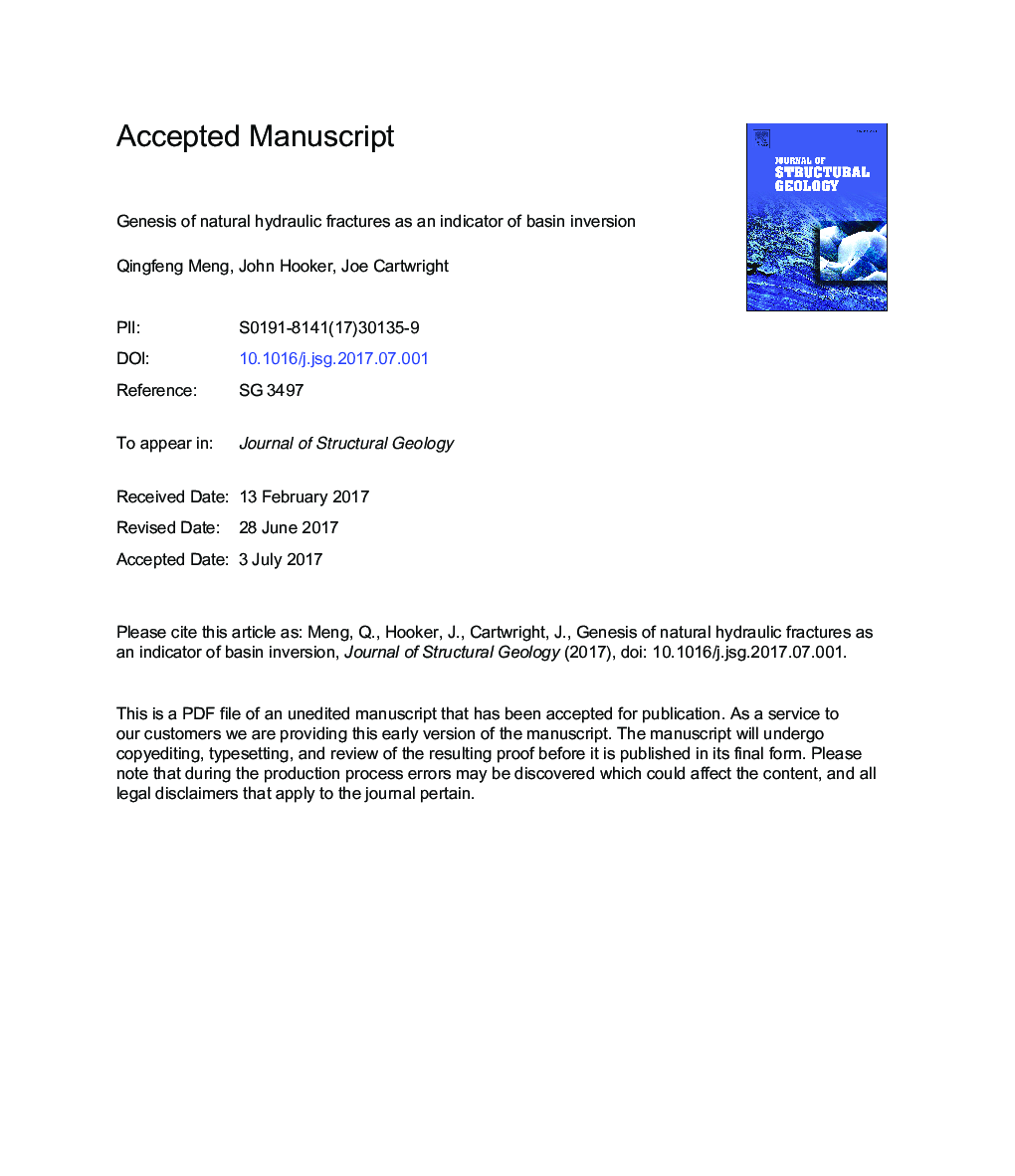| کد مقاله | کد نشریه | سال انتشار | مقاله انگلیسی | نسخه تمام متن |
|---|---|---|---|---|
| 5786243 | 1640478 | 2017 | 57 صفحه PDF | دانلود رایگان |
عنوان انگلیسی مقاله ISI
Genesis of natural hydraulic fractures as an indicator of basin inversion
ترجمه فارسی عنوان
پیدایش شکستگیهای هیدرولیکی طبیعی به عنوان شاخصی از انحنای حوضه
دانلود مقاله + سفارش ترجمه
دانلود مقاله ISI انگلیسی
رایگان برای ایرانیان
کلمات کلیدی
شکستگی هیدرولیکی، موستون، مهر و موم رگ ضد باکتری، معکوس حوضه، بیش از حد،
موضوعات مرتبط
مهندسی و علوم پایه
علوم زمین و سیارات
زمین شناسی
چکیده انگلیسی
Satin spar (fibrous gypsum) veins, which occur in evaporite basins worldwide, provide significant insights into host rock deformation and fluid flow, although the genetic mechanism remains obscure. Satin spar veins in the red marls of the Triassic Mercia Mudstone of the Bristol Channel Basin were characterized in the context of regional and local setting. The vein network in the Keuper Marl (lower Mercia) exhibits a lack of systematic cross-cutting between three distinct vein sets. Two sets of veins are observed in the overlying Tea Green Marl, with one set clearly crossing the other. The gypsum veins commonly contain a blocky median zone of multiple thin bands of host-rock inclusions and alabastrine gypsum crystals, exhibiting crack-seal patterns. Fibrous zones on either side of the median zone consist of pure parallel-aligned gypsum fibres that are oblique to vein walls, indicating a hybrid shear-extensional mode of vein widening. Veins developed within reverse-reactivated faults contain fibre lineations in the median zones and also on vein surfaces, suggesting a minimum of two phases of fault slip. The veins are interpreted to have formed as a result of overpressure in the low-permeability mudstones by tectonic compression during basin inversion, giving rise to the median zone. Growth of gypsum fibres commenced when the initial fractures were completely sealed. The timing of vein formation is suggested to be Miocene, based on cross-cutting relationships with folds formed during the latest phase of basin inversion. Because the fractures initiated in response to fluid overpressures, they provide a useful analog to subsurface hydraulic fracture systems in low-permeability rocks subjected to tectonic compression. The fibrous widening of the veins post-dates their initiation and led to continued propagation and increased connectivity.
ناشر
Database: Elsevier - ScienceDirect (ساینس دایرکت)
Journal: Journal of Structural Geology - Volume 102, September 2017, Pages 1-20
Journal: Journal of Structural Geology - Volume 102, September 2017, Pages 1-20
نویسندگان
Qingfeng Meng, John Hooker, Joe Cartwright,
